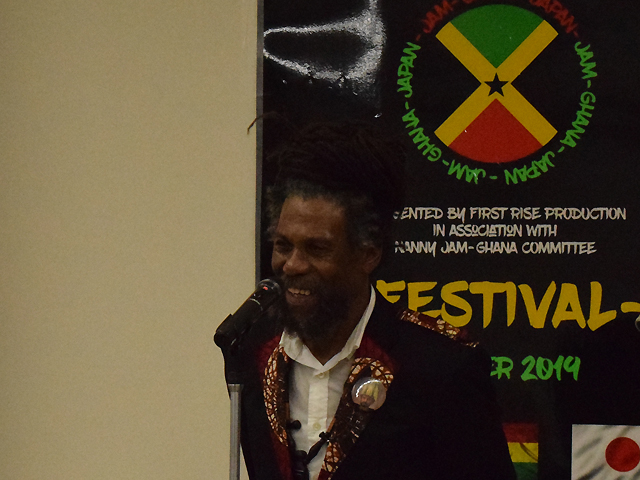
The Maroons are a key part of the history of Jamaica and our connections, and the Tainos. African Enslavement was introduced by the Spaniards to Jamaica and indeed throughout the entire Americas by European settlers in the early 16th century. To the European chagrin – and indeed to the Spaniards who had set up plantations in Jamaica to feed the motherland, Spain – little did they know that some of the enslaved had resolved that they had not signed up to be subhuman to anyone. These fierce and proud West Africans rebelled. These West Africans retreated to the hilly interiors of Jamaica where they intermarried the Tainos. Thus the Maroons are West African and Tainos. The Maroons were exceedingly skilled at guerrilla war tactics and soon won their freedom from their Spanish enslavers.
“The Tainos are the indigenous Indians who had inhabited Jamaica prior to the landing of Christopher Columbus. There are some debates about whether or not the Europeans introduced Africans to the Americas or Africans who already co-existing with the American Indians hundreds – if not thousands of years prior. These debates stem from artefacts which have been uncovered and the similarities of the pyramids to those of Africa which are found throughout the Americas”.
Freedom for the Maroons meant prosperity for the Spaniards. The Spaniards knew they were not equipped tactically, strategically or administratively to match the wit of the Maroons. Life was relatively harmonious on the island of Jamaica until the British in their quest to expand the king’s empire set about overthrowing the Spaniards. This led to a bloody confrontation starting in 1655. The Spaniards themselves proved to be no match to the British invaders. They needed help. They called on the intelligent Maroons who had established settlements in the hilly hinterlands for help. They also promised to make the enslaved who stood in battle with them freed people.
They war waged on for over five (5) years. The brutal British force eventually defeated the Spaniards. Just before their final defeat, the Spaniards held true to their promise and set the enslaved who had stood in battle with them free. These newly freed people joined their other comrades in battle in their hinterland enclaves. The idea was that they would stay away from the British and the British would keep away from them.
The British however, could not accept this as the new normal as so set about sending their troops to pillage the Maroons’ villages and try to re-enslave them. Needless to say, the Maroons, many of whom were of noble blood lineage, would not capitulate. Thus began the first Maroon War. The Maroons, though exceedingly few in numbers, proved to be formidable opponents to the well trained British soldiers and militias. The British suffered considerable losses. They paid an extremely high toll in blood and to property. Their plantations were raided repeatedly. Their fields and warehouses were set ablaze constantly. All the while they could not see the Maroons. They only knew the Maroons were there after the attacks and the Maroons had long returned to their safe retreats.
Begrudgingly, the first Maroon treaty was signed between the British and Captain Cudjoe, the leader of the feared Leeward (Western Jamaica) Maroons on March 1, 1739, granted Cudjoe’s people 1,500 acres of land named Trelawny Town. Fighting waged on for another 9 months In eastern Jamaica, culminating in the British surrendering to the Windward (Eastern Jamaica – home to the world’s best Blue Mountain Coffee). In a similar manner, the British signed a peace treaty with Captain Quao the leader of the Windward Maroons, December 23, 1739.
A year later, peace reigned after signing a treaty with arguably the most fearsome and strategic of all the Maroon leaders, Nanny the leader of the Moore Town (formerly Nanny Town) Maroons with the British. The key elements of all these treaties were the granting of a vast piece of land which formed each of the Maroon Village dotting the undulating topography of the hinterlands of Jamaica, and that these Maroons were freed and autonomous. Nanny is the only female among Jamaica’s seven national heroes. Her image is pictured on the $500.00 Jamaican bank note. Interestingly, the five key historical figures Accompong, Quao, Cuffy, Cudjoe, and Nanny who fearlessly took the war to the British were all siblings.
The 1,000 acres Accompong Maroon Village nestled in the Cockpit Country of St. Elizabeth Jamaica just south south east of the 1,500 acres Trelawny Town, which derived its name from its leader Accompong is almost 300 years old. Other notable Maroon settlements that have survived are Moore and Charles Town in Portland, and Scotts Hall in St. Mary. To date, Maroons are exempt from paying taxes in Jamaica and many of their traditions have carried forward to present day Jamaica. They have left an indelible mark on the culture and heritage of Jamaica – most notable are Jamaican Jerk Chicken, Pork and Sausage, Bammy and Cornmeal Porridge, the leading Jamaican breakfast staple.
In 2005, UNESCO declared the music of the Moore Town Maroons a “Masterpiece of the Oral and Intangible Heritage of Humanity.”
マルーンはジャマイカの歴史の重要な部分であり、アシャンティや現在のガーナ、タイノとのつながりがあります。アフリカ人の奴隷制は、スペイン人によってジャマイカに、そして16世紀初頭にヨーロッパ人の入植者によってアメリカ大陸全体に導入されました。祖国スペインを養うためにジャマイカにプランテーションを設立したスペイン人たちは、奴隷となった人たちの中に誇り高い人々がいることをほとんど知らなかったのです。これらの獰猛で誇り高い西アフリカ人は反乱を起こしました。彼ら西アフリカ人はジャマイカの丘陵地の内陸部に退却し、そこでタイノ人との間に子達をもうけました。このようにマルーン人は西アフリカ人とタイノス人のミックスです。マルーン人はゲリラ戦術に非常に長けていて、すぐにスペイン人からの自由を勝ち取りました。
“タイノ族”は、クリストファー・コロンブスが上陸する前にジャマイカに住んでいた先住民族です。ヨーロッパ人がアフリカ人をアメリカ大陸に連れてきたのか、それとも何百年も何千年も前からアメリカのインディアンと共存していたアフリカ人なのかという議論もあります。これらの議論は、発掘された遺跡・遺物や、アメリカ大陸全体で発見されたアフリカのものとピラミッドの類似性に由来しています。
マルーン人にとっての自由は、スペイン人にとっての繁栄を意味しました。スペイン人は、自分たちがマルーン人の機知に匹敵するような戦術的、戦略的、管理的な装備を備えていないことを知っていました。ジャマイカ島の生活は、王の帝国を拡大するためのイギリスの探求がスペイン人を転覆させようとするまで、比較的調和のとれたものでした。これが1655年に始まる血なまぐさい対立につながった。スペイン人自身はイギリスの侵略者には敵わないことを十分に知っていましたし彼らは助けを必要としていました。彼らは、丘陵地の後背地に入植地を設けていた知的なマルーン人に助けを求めました。彼らはまた、スペイン側でイギリスと戦っていた奴隷を解放することを約束しました。
イギリス対スペイン・マルーン人連合軍の戦争は5年以上続きました。残忍なイギリス軍は最終的にスペイン人を打ち負かしました。彼らの最後の敗北の直前に、スペイン人はマルーン人と交わした約束を守り、奴隷を自由にしました。これらの新たに解放された人々は、彼らの後背地の飛び地でのイギリス軍との戦いで他の同志に参加しました。この戦いの目的は、マルーン人がイギリス軍に近づかないように、イギリス軍は彼らに近づかないようにするというものでした。
しかし、イギリス軍は、マルーンの村を略奪し、解放された元奴隷たちを再奴隷にしようとするために軍隊を送ってきました。言うまでもなく、マルーン人はその多くが高貴な血統であったため、降伏することはありませんでした。こうして第一次マルーン戦争が始まりました。マルーン人は、数が非常に少ないとはいえ、よく訓練されたイギリスの兵士や民兵にとって、手ごわい相手でした。イギリスはかなりの損失を被りました。彼らは血と財産に多大な犠牲を払わされました。イギリス人の農園は何度も襲撃され、彼らの畑や倉庫は絶え間なく燃やされました。こういったことが起こっている最中にも彼らはマルーン人を目撃すらすることができませんでした。
渋々ながらも、1739年3月1日、イギリス人から恐れられていたマルーンのリーダーであるキャプテン・クジョー(Captain Cudjoe)との間でリーワード(ジャマイカ西部)において最初のマルーン条約が調印され、クジョーの人々に1,500エーカーの土地をトレラーニー・タウン(Trelawny Town)という名前で与えられました。ジャマイカ東部での戦闘はさらに9ヶ月間続き、イギリスはウィンドワード(ジャマイカ東部-世界最高のブルーマウンテンコーヒーの故郷)に降伏することになりました。同様の方法で、イギリスは1739年12月23日、風上マルーンのリーダーであるキャプテン・クアオと平和条約に署名しました。

1年後、マルーンの指導者の中で最も恐ろしく戦略的な指導者ナニーと、ムーアタウン(旧ナニータウン)においてイギリスとの条約に調印して平和が訪れました。これらの条約の重要な要素は、ジャマイカの後背地の起伏に富んだ地形に点在するマルーン村を形成する広大な土地を与えられたことと、これらのマルーン人が解放され自治権を得たことでした。ナニーはジャマイカの7人の国民的英雄の中で唯一の女性です。彼女の姿はジャマイカの500ドル紙幣に描かれています。興味深いことに、戦争を恐れずにイギリスに挑んだアコンポン、クアオ、カフィー、クジョー、ナニーの5人の歴史上の重要人物は、全員兄弟だったのです。
ジャマイカのセント・エリザベスのコックピット・カントリー(Cockpit Country of St. Elizabeth Jamaica)にある1,500エーカーのトレラーニー・タウン(Trelawny Town)のすぐ南東に位置する1,000エーカーのアコンポン・マルーン・ビレッジ(Accompong Maroon Village)は、マルーンリーダーであったアコンポン(Accompong)に由来する名前で、約300年の歴史を持っています。生き残っている他の注目すべきマルーンの入植地は、ポートランドのムーアとチャールズ・タウン、セント・メアリーのスコッツ・ホールです。今日まで、マルーン人はジャマイカでの納税を免除されており、彼らの伝統の多くは現在のジャマイカにまで受け継がれています。彼らはジャマイカの文化と遺産に忘れがたい足跡を残してきました-最も注目すべきはジャマイカのジャークチキン、ポークとソーセージ、バミー、そしてジャマイカの朝食の主食であるコーンミール・ポリッジです。
2005年、ユネスコはムーア・タウンのマルーンの音楽を “人類の口承と無形遺産の傑作 “と宣言しました。


